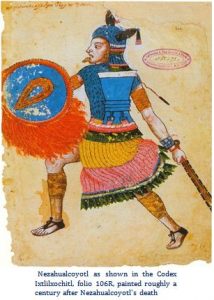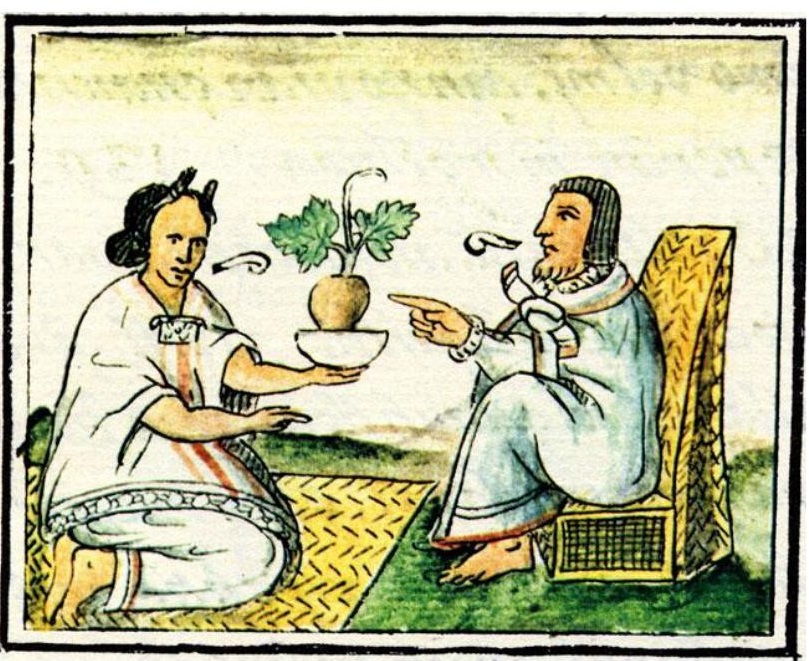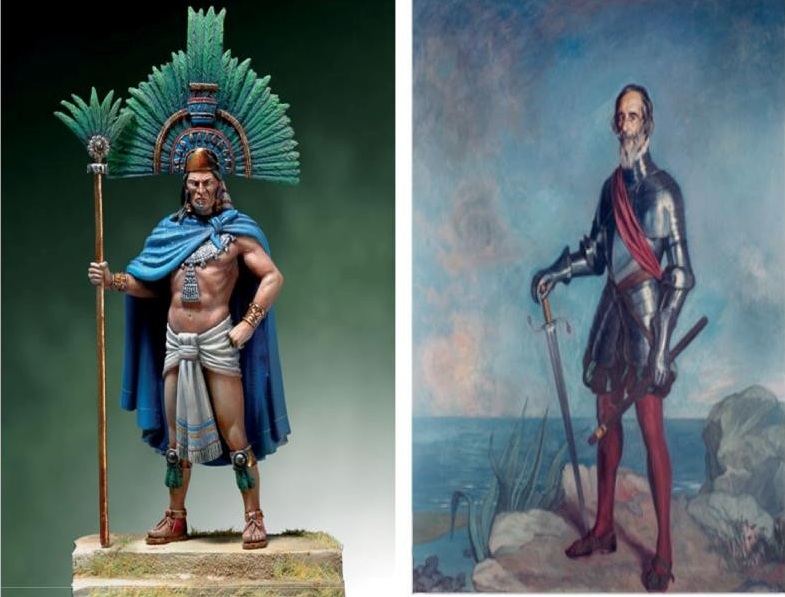By Manzanillo Sun Writer from the September 2015 Edition
Fernando de Alva Cortés Ixtlilxóchitl (between 1568 and 1580 – 1648) was a Castizo Novohispanic historian. In 1612 he was governor of Texcuco, and in 1613 governor of Tlalmanalco. In spite of his illustrious birth, good education and obvious ability, h e lived most of his life in dire poverty. Most of his works were written to relieve his wants. He died in Mexico City in 1648. His Codex Ixlilxochitl gives us the following story:
e lived most of his life in dire poverty. Most of his works were written to relieve his wants. He died in Mexico City in 1648. His Codex Ixlilxochitl gives us the following story:
There is the ancient town of Texcuco which sits a few miles North and East of Mexico City. During its Golden Age it held the palace of Nezahualcoyotl. Within the palace walls were the most beautiful gardens which were built to add abject beauty to the king’s villa. They were said to rival the Hanging Gardens of Babylon which were built by King Nebuchadnezzar II in 600 BCE. These were built during the Golden Age during the first half of the 15th century (1400 CE) by Nezahualcoyotl. Visitors today can visit within some of these gardens and still marvel at their beauty. The majority of them are under Lake Texcuco.
We know these facts because of the Codex Ixlilxochitl fragment written by Fernando de Alva Cortes Ixlilxochitl who was the great grandchild of Ixlilxochitl the first who was the son of Nezahualcoyotl. His royal linage goes farther back and someone married or had a child relating to the great Hernando Cortez more recently along the blood line. One of the important things about Nezahualcoyotl is the discovery that he was a poet and his son, Nezahualpilli, was married to a very beautiful woman, Chachiunenetzin. Not only was she his favorite but she was also the daughter of the King of Mexico, Azaiacatzin. He found that his oldest son had been cockolded by her many times.
When she first arrived in Texcuco she became feared because of her power being the daughter of the king and that she had a real venomous attitude.
She had been raised in her own palace with all the pomp and ceremony that a thousand servants could supply. When she arrived at Texcuco, she did so with over two thousands of them. After her arrival she took stock of her situation and quickly moved into a mode of debauchery and general nastiness more or less because she was alone and could get away with it. Her behavior grew to the point that when she saw a young man that she liked, she would have him secretly sent to her. She wasn’t worried because each man would be put to death a short time later. What she would do was to have a small statue made of each man. She would then decorate it with her jewels and other finery and have it placed in her rooms in the palace. Rumor had it that it was getting difficult to move in her apartments. When the king would come to visit she would tell him that they were her gods. As he was a Mexican king and had the belief and practice of only one god he had to believe her while marveling at the exorbitant they were each decorated with shawls, other clothing and her jewels.
As all good things must come to an end, so did her little world of promiscuity. For some reason, and its not explained anywhere, she allowed three of her suitors to live. Their names were Chicuhcoatl, Huitzilimitzin, and Maztla. One of these young coxswains was lord of Tesoyucan and one of the grandees of the kingdom while the other two were of nobility quite high on that stack. The cat was let out of the bag because the King recognized a piece of jewelry on one of them that matched one that he had given to his queen. Even though there was a logical explanation for this, he decided to visit the girl’s quarters during the night and was told that she was sleeping. There’s an advantage to being the king and he entered her chambers anyway. He found only a statue in her bed slightly made up like her. He noted that her servants were very edgy and called his guard. His subsequent search of the grounds found her with all three enjoying, shall we say, a “ménage-a-trios’’ plus one. At that moment all were arrested.
After an investigation when he discovered what all the statues meant, along with the implication of all the servants and workmen involved, the King send emissaries and ambassadors to all the other rulers of Mexico and Tlacopan with all the information and invitation to the event. He also made peace or at least a truce with all the enemies of the empire so that they would have free passage to come and watch as well. So many showed up that the city was hard put to find room for everyone. This public display of justice was viewed publically. The Queen and her lovers were all garroted. That’s a rope around the neck turned slowly tighter by a stick. Then the bodies were burned along with all of the queen’s little statues. They then dug a large pit and garroted all the servants and other employees that had anything to do with the queen’s deceit. That number ran into the thousands as well and they were all tossed into that large pit and burned.
Everyone but the relatives of the Queen enjoyed the show and thought the punishment was justified. The relatives were really miffed at the publicity of the spectacle and vowed future revenge. (This leads to more stories about plot and counter plot among the Royals.)
There is a side note to this story which rings of modern times: Nezahualpilli, the husband of this woman, fell in love with technology during his reign and scientific things to the point that he built their first observatory. The inference being that he probably wouldn’t have been able to keep her happy anyway because he probably was of the nerdy type.
Download the full edition or view it online
Manzanillo Sun’s eMagazine written by local authors about living in Manzanillo and Mexico, since 2009





You must be logged in to post a comment.